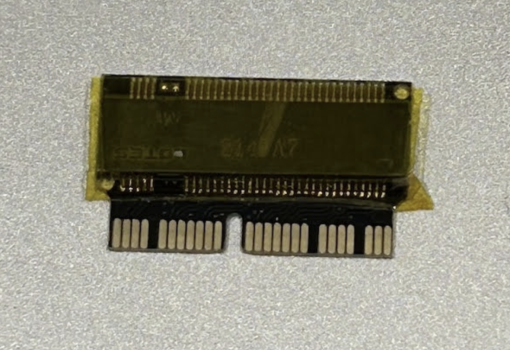Hi everyone!
This is my first post here. I've been browsing for a while and found a lot of helpful information, but some of the answers I’ve seen about upgrading storage in the iMac A2115 (2019) model seem a bit outdated. So I thought I’d ask directly and hopefully get some up-to-date guidance.
I own a 27" iMac A2115 (2019) with a 1TB Fusion Drive and 64GB of RAM. The machine still serves me well, but the disk performance is clearly the weakest link. It's time for an upgrade.
I'm also about to replace the power supply, and since I’ll be opening the iMac anyway, I figured this is the perfect opportunity to upgrade the internal storage. I’m considering a power unit from Ycheda (available online), but I’d love to hear if anyone has experience with this brand. Is it trustworthy, or should I look for an alternative?
1. What’s the best internal drive upgrade option for this model? NVMe SSD in the blade slot? SATA SSD?
2. Any specific brands or models you’d recommend for performance and compatibility?
3. Will I need any adapters, thermal sensors, or mounting tools for the disk upgrade?
4. Anything to keep in mind when removing or replacing the Fusion Drive components?
5. Any thoughts on Ycheda power supplies? Alternatives welcome.
I’m aiming for a significant speed boost (especially in boot times and app launching), and I’d prefer an internal solution rather than relying on external drives.
Thanks so much in advance for any advice! Looking forward to learning from you all.
This is my first post here. I've been browsing for a while and found a lot of helpful information, but some of the answers I’ve seen about upgrading storage in the iMac A2115 (2019) model seem a bit outdated. So I thought I’d ask directly and hopefully get some up-to-date guidance.
I own a 27" iMac A2115 (2019) with a 1TB Fusion Drive and 64GB of RAM. The machine still serves me well, but the disk performance is clearly the weakest link. It's time for an upgrade.
I'm also about to replace the power supply, and since I’ll be opening the iMac anyway, I figured this is the perfect opportunity to upgrade the internal storage. I’m considering a power unit from Ycheda (available online), but I’d love to hear if anyone has experience with this brand. Is it trustworthy, or should I look for an alternative?
1. What’s the best internal drive upgrade option for this model? NVMe SSD in the blade slot? SATA SSD?
2. Any specific brands or models you’d recommend for performance and compatibility?
3. Will I need any adapters, thermal sensors, or mounting tools for the disk upgrade?
4. Anything to keep in mind when removing or replacing the Fusion Drive components?
5. Any thoughts on Ycheda power supplies? Alternatives welcome.
I’m aiming for a significant speed boost (especially in boot times and app launching), and I’d prefer an internal solution rather than relying on external drives.
Thanks so much in advance for any advice! Looking forward to learning from you all.


